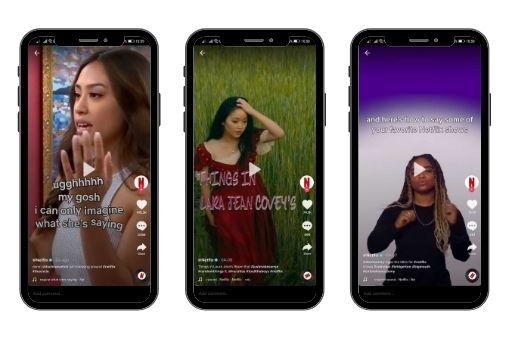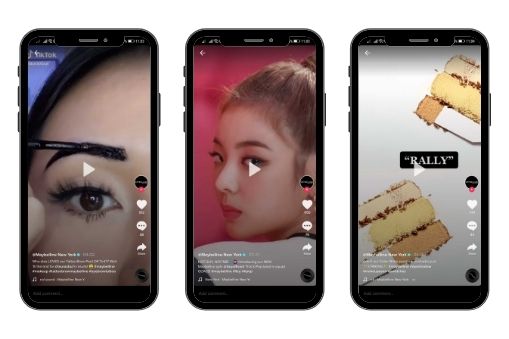With more than 800 million users and counting, the social media platform TikTok is showing no signs of stopping. With constant growth on the horizon, it was only a matter of time before TikTok busted down its doors and spread its arms wide for advertising.
Taking advantage of its number of users and worldwide appeal, TikTok opened its “Self-serve” ad platform early last year. Their goal was to attract small to medium-sized businesses to the platform’s new advertising solution as a viable means of growth for their brands.
One couldn’t expect anything less from the most downloaded app in 2020.
Even with TikTok’s advertising solution made available to the public, the question now is whether they are effective campaigns.
A Quick Look at TikTok’s Self-serve
The apple doesn’t fall far from the tree when it comes to TikTok’s Self-serve platform. It has many of the same features that other platforms – such as Facebook, Snapchat, and LinkedIn – have.
Dashboard

For starters, the dashboard shows advertisers the summary of their campaigns and how they are performing. Certain metrics such as trends, placements, conversions, spending, and many more insights will be available.
Pixels
Advertisers will also be able to create tracking pixels for websites. The creation process itself is akin to that of Facebook’s, so people who are already familiar with it will have no problems whatsoever.
A helper plugin is also available that helps in troubleshooting and checking with implementations.
Once the pixel has been created, all that is left is to place them on the pages. This can be achieved in a number of ways like a custom HTML tag or a script in the head of a page.
The main difference between TikTok’s pixel and Facebook’s is that the former only requires one script. The multiple events are created via TikTok, with rules like click interactions and views on a page.
Ad Campaigns and Audience
Currently, there are only three ad campaign objectives to choose from. However, this will likely grow as time goes on. The three campaigns include traffic, app installation, and one of the most important ones, conversion.
For targeting, several criteria can be customized and used:
- Custom audiences from a website (once the pixel has been added)
- Engaged users on TikTok via video views, profile views, and how engaged they are with content
- Based on demographics
- Based on interests
Budget
Also available is the ability to set a daily or lifetime budget for campaigns, as well as start and end dates if it is necessary to do so. The scheduling feature is also quite robust, as advertisers can set daily schedules for campaigns.
Video Creation Kit and Ad Types
Perhaps the most unique thing about the platform though is the video creation kit. Making ads on TikTok is easy as users can utilize numerous image and video templates, and even backing tracks.
The ad creation is also quite versatile and straightforward. Ads can be horizontal, vertical, and even square shaped.
There are several ad types that ad creators can choose from. The first is brand takeovers. These are ads that are instantly seen as the TikTok app is opened. Once clicked, it can be directed to both external links (like a website) or internal links (like another TikTok video.
The next is in-feed ads. As the name suggests, these are ads that are placed within organic TikTok videos. They are usually found on the bottom of the screen, and can also be a part of the video queue feed itself.
Finally, we have hashtag challenges. Advertisers can work together with the TikTok team to create a sponsored hashtag challenge. This challenge pushes users to share content for the brand.
Tipping the Scale – Video Style and Authenticity
Apart from the video creation kit and ad types, TikTok’s self-serve ad platform is quite similar to many other social media platforms in terms of what it offers and how it is used.
There is one tipping point when it comes to choosing TikTok to other social media platforms. This is the general style of the produced content.
The videos in TikTok are snappy and concise, with personalities engaging with their audience through their screens.
Much like the video above, user @brendangahan created an effective video about the biggest livestreamer on the planet. He interweaves photos of the most popular livestreamers in Ninja, Pokimane, and Dr. Disrespect, but comes in and blows everybody’s minds by introducing Viya, the biggest streamer from China that nobody has heard of.
More than the production though, it is the personality and engagement of the video host that shines through and catches the attention of the people watching.
Why Advertise on TikTok?
A Wide Audience Reach
People think that most, if not all, TikTok users are ages 16 to 24. The common misconception is that TikTok is a platform that is taken over by the GenZ crowd. This can’t be farther from the truth.
It is true that users aged 16 to 24 on TikTok comprise approximately 40% of the total users. However, this means that the other 60% are spread out through the many other generations. These include millennials, GenX, and baby boomers.
Thus, advertising on TikTok means taking advantage of reaching a big and diverse audience.
A Finger on Trendy Pulses
TikTok is a place where trends are created. Frequenting the platform means that it is an opportunity for any brand to utilize these trends for growth.
Any brand can take a look at the latest trends and attempt to replicate it via an ad that can go viral just like that.
Even if it doesn’t go super viral, aligning the ads to these trends increases how relevant and engaging it is to the audience. It also has a better chance of coming out on user’s feeds this way.
Mirroring TikTok’s Authenticity
One hallmark of TikTok is authenticity. Other social media platforms, like Instagram for example, tend to present a “best foot forward” side of themselves. This is quite understandable, as these content creators want to show off an ideal and attractive side.
On TikTok though, content creators tend to express their real selves more. People show their everyday lives, styles, stories, and fashion senses. This authenticity is a big part of the user engagement.
As such, brands can also take a piece of the engagement pie by advertising in a similarly authentic way.
Now that we’ve looked at TikTok self-serve, the tipping point, and several reasons to advertise on the platform, the question still remains: will the campaigns be effective?
In this next section, we’ll take a look at several brands that have advertised on TikTok and the outcomes of their endeavors.
TikTok Ad Campaign Success Stories
Netflix

Netflix wanted to increase people’s awareness of their growing number of Christmas specials. Thus, they came to TikTok and crafted a branded hashtag challenge to interact and engage the audience with.
The chosen hashtag was #Netflixmas. The challenge was to have users show how they were celebrating Christmas that year. The campaign saw people create videos based on their favorite filmed Christmas scenes.
The outcome was a huge resounding success. The challenge itself was easy to follow and straightforward. This resulted in record breaking numbers on TikTok. In just a couple of weeks, the challenge had garnered 1.2 billion views.
Maybelline

For the longest time, cosmetic company Maybelline has always been geared towards mature women. They wanted to pivot and expand their audience through a TikTok campaign geared towards younger women.
The featured product was Volume’ Express Hyper Curl Mascara. The solution they chose was to invite influencer Reiko for a video entitled Mascara Boyfriend.
The video compared eyelashes to boyfriends. Just like eyelashes, no matter how they are styled, and no matter how much girls want them to look, they never come out the way you want them to (just like boyfriends). The authentic message resonated well with the younger generation.
Within just one day, Maybelline was able to garner over 48k likes in this campaign. Brand awareness increased by 80%, with brand favorability also increasing by close to 48%.
Chipotle

Like every good business, it is in their best interest to engage and make a connection with customers. The catalyst for Chipotle joining TikTok was actually the numerous mentions from people in the community.
Chipotle then decided to capitalize on this. They hoped that their joining TikTok would help connect better with the younger generation while also presenting their brand in a very genuine way.
The content in Chipotle’s continuous campaign is very casual and down to Earth. This includes things like users sharing their favorite salsa recipes. Apart from that, they also produce highly comedic skits and videos.
The Chipotle TikTok account has more than 1.3 million followers. They have also amassed more than 19 million likes, and have published more than 100 videos.
A Bridge to Effective and Authentic Engagement
TikTok is a unique social media platform that continues to grow its popularity and communities. One of the most unique things about it is the concise and creative video contents, as well as the authenticity that helps to connect with people more.
While not as big as other social media platforms like Facebook, if the momentum is kept on track, the TikTok self-serve ad platform can make larger and larger waves.
The stories of Netflix, Maybelline, and Chipotle are just a few examples of the many successes that can be found with TikTok’s self-serve platform. If brands continue to have their finger on the pulse of trends, and ensure to be authentic, there is no reason why campaigns can’t be effective and successful.

